 The positive aspects of sport are almost too numerous to mention. From the physical benefits of participation to the endless excitement and drama of watching the action unfold. Be it football, athletics, rugby, or indeed the subject of this article – horse racing – events at the highest level often create tales and abiding memories which live on through the decades. It’s all part of what makes the wonderful world of sport so popular all around the world.
The positive aspects of sport are almost too numerous to mention. From the physical benefits of participation to the endless excitement and drama of watching the action unfold. Be it football, athletics, rugby, or indeed the subject of this article – horse racing – events at the highest level often create tales and abiding memories which live on through the decades. It’s all part of what makes the wonderful world of sport so popular all around the world.
Nothing however is perfect. Whatever the sport, the lure of financial gain, or simply a greater shot at glory, can be enough to lead certain unscrupulous individuals to seek an unfair competitive advantage. And when we speak of this unfair edge, what we are of course most commonly referring to is the taking of an illegal, performance-enhancing substance.
Blazing into the spotlight with the disqualification of Olympic 100 metre champion Ben Johnson back in 1988, incidents of drug-taking in sport have been an all too regular occurrence almost ever since. Few, if any sports have remained untainted, with horse racing sadly finding itself included amongst that number. Immoral at the best of times, doping is perhaps even more deplorable in the “Sport of Kings”. For whereas in the majority of other sports it is a human administering the drug to themselves, or at least consenting to it, horses really have very little say in the matter.
Clearly this is an activity which has no place in a sport so beloved both in Britain and Ireland, and indeed all around the world. And thankfully this is a viewpoint with which the sport’s organising bodies concur, with the British Horseracing Authority (BHA), Irish Horse Racing Board (IHRB) and the majority of their international counterparts, adopting a zero-tolerance approach to doping, in order to protect the integrity of the sport and the betting which surrounds it, and of course the welfare of the animals themselves.
Here we take a closer look at this murkier side of the greatest equine sport on the planet, including information on exactly which substances are banned, the testing procedure and punishments, and just how prevalent it is within the sport. The detailed discussion will focus upon the situation here in Great Britain, but to conclude we will take a look at a major scandal to have hit US racing.
Which Substances Are Banned?
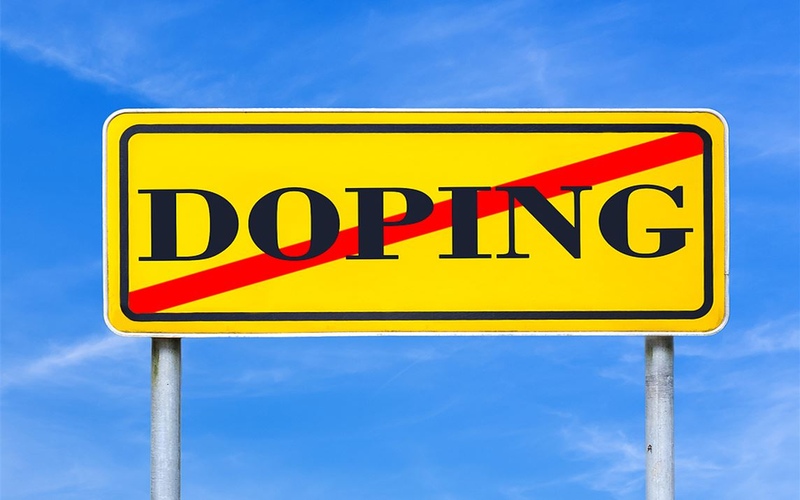
The quick answer to this question is a simple one – everything other than normal feed or water is prohibited. Trainers must be very careful when it comes to what they are administering to their horses, and the BHA rulebook really couldn’t be much clearer in terms of spelling that out, saying that trainers should:
“assume that any medication or supplement (including herbal substances) that has, or claims to have, an effect on horses (or any other species) is prohibited unless you have specific advice from the BHA Equine Health and Welfare Department that states otherwise.”
That rule is all encompassing, and further highlighted by the ruling regarding substances on the day of the race itself, which goes as follows, “Administration of any substance, except normal food and water is prohibited on racecourse premises and on the day of the race, unless special dispensation has been granted.”
Indeed, should the BHA even suspect that an unauthorised substance may be present at the track on race day, they have the authority to search staff and horse transport vehicles, and take samples of feed or water as they see fit.
However, it isn’t quite as simple as all that, as in the racing world, not all unauthorised substances are created equally …
Medication Control
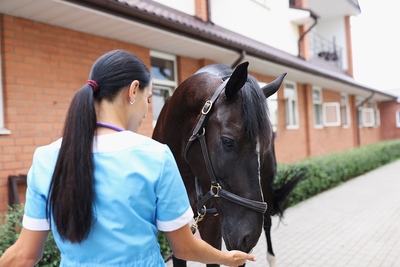 In a perfect world trainers would be able to keep their animals fit and healthy only through the use of normal feed and water. Of course, we don’t live in a perfect world, and just like humans – or indeed any other species – horses will inevitably have their illnesses and ailments from time to time, the treatment of which may require the use of medication. And it is this fact to which the “special advice from the BHA Equine Health and Welfare Department” section of the rules refers. This is an area of substance usage known as medication control.
In a perfect world trainers would be able to keep their animals fit and healthy only through the use of normal feed and water. Of course, we don’t live in a perfect world, and just like humans – or indeed any other species – horses will inevitably have their illnesses and ailments from time to time, the treatment of which may require the use of medication. And it is this fact to which the “special advice from the BHA Equine Health and Welfare Department” section of the rules refers. This is an area of substance usage known as medication control.
Under medication control guidance, all treatments which are in the best interests of a horse’s health and welfare will be permitted, so long as they have been advised as a recommended course of treatment by a veterinary surgeon. Such drugs or supplements fall into the “Controlled Prohibited Substances Category”. It is then the trainer’s responsibility to keep rigorous records of all medications, supplements etc, and to have this medication log available upon request.
The important point to note here is that whilst horses are allowed to be given a wide range of drugs and treatments for health reasons, they are NOT permitted to race under the influence of these drugs, with the only exceptions being certain anti-infection treatments or vaccinations. That fact obviously brings in the problem of how is a trainer to know exactly when a drug may have completely left a horse’s system?
In order to help in this regard, a list of detection times is published in relation to all of the most commonly used therapeutic medications, enabling veterinarians to give trainers accurate advice as to when their horse will be eligible to run following the completion of treatment. With this published list and advice in place, it is hoped that the number of positive tests returned as a result of a legitimate treatment will be minimised.
Considering the punishments involved in a horse returning a positive drug sample – more on that later – the majority of trainers will use not the recommended detection time, but rather an interval known as the Withdrawal Period – effectively the published detection time with an additional period added as a safety buffer.
The Black List: Banned At All Times
 Administering substances or treatments in the best interests of a horse is really only part and parcel of the trainer’s job and, whilst needing to be strictly monitored and regulated, is an essential part of the game.
Administering substances or treatments in the best interests of a horse is really only part and parcel of the trainer’s job and, whilst needing to be strictly monitored and regulated, is an essential part of the game.
What certainly isn’t part and parcel of the game however, is the use of substances which have no health benefits whatsoever – and may even be detrimental – with the only goal being to increase the horse’s chances on the track.
Such substances, which may not be administered to a horse for any reason at any point during their career, fall under the “Anti-Doping” category of legislation, and include the following:
- Anabolic Agents – A category including Anabolic Steroids which have caused such controversy across the sporting spectrum in a while range of disciplines. These agents act to unnaturally increase the levels of muscle mass and decrease body fat percentages, potentially improving the performance of the horse. Possible negative side effects are numerous, including increased likelihood of infection, and the development of an extremely painful hoof condition known as Laminitis.
- Peptide Hormones – These substances act to trigger growth, appetite, energy production and cardiac function. Side effects can include debilitating fat deposits and Laminitis.
- Hormone and Metabolic Modulators – Can be used to increase testosterone levels in both male and female horses. A major subject of debate in athletics, higher testosterone levels are known to improve performance, both in humans and horses. Increasing testosterone can however alter the character of the horse, and comes with an array of potential side effects, including many related to the abdominal and reproductive organs.
- Oxygen Carriers – Usually altered versions of haemoglobin, designed to increase lung to muscle oxygen transfer. A long and worrying list of side effects includes hypertension, diarrhoea, fever and stroke.
- Masking Agents – Not performance enhancers in and of themselves, these drugs aim to hide other banned substances. The presence of a masking agent in a sample is usually taken as a big red flag and, like the more dangerous items on this list, they are also prohibited.
The Testing Procedure
Including what is a fairly long list of medications, in addition to those illicit substances which are banned at all times, racing authorities have a fair bit to keep on top off.
Thankfully though, there is an extensive testing procedure in place in most jurisdictions around the world.
Focussing on the way things operate here in Great Britain and Ireland, there are three main methods of testing in place; Race Day, Out of Competition and Elective.
Race Day Testing
 Testing on the day of the race falls into two categories; pre-race testing and post-race testing. In both instances, the horses to be tested will either be selected at random by the racecourse stewards or on the back of received intelligence.
Testing on the day of the race falls into two categories; pre-race testing and post-race testing. In both instances, the horses to be tested will either be selected at random by the racecourse stewards or on the back of received intelligence.
In the instance of pre-race testing, connections of the selected horse must agree to their horse being tested, or the horse will not be permitted to take part in the race. A refusal to comply with a pre-race test is likely to result in a subsequent investigation into the reasons behind the refusal.
Post-race testing will usually take place in the immediate aftermath of the race. The runners may again be selected at random, but with post-race testing there is the potential for a more performance-based selection process. Has a runner performed either well above, or well below their recent level of form? If the answer to either of those questions is yes, they may find themselves a prime candidate for a post-race drugs test.
With both forms of race day testing, runners will be taken to the on-course sampling unit, where the required samples will be extracted under the supervision of BHA staff, in addition to staff from the yard of the horse in question.
Out Of Competition Testing
 Whilst many prohibited substances will be detectable in samples taken on the day of the race, there are circumstances whereby certain substances may be used during the training of a racecourse – to trigger a jolt of physical development for example – but which will then have left the horse’s system by race day.
Whilst many prohibited substances will be detectable in samples taken on the day of the race, there are circumstances whereby certain substances may be used during the training of a racecourse – to trigger a jolt of physical development for example – but which will then have left the horse’s system by race day.
And this is where out of competition testing comes in.
BHA staff may turn up at any training operation, at any time, in order to test a runner, either acting entirely at random, or following the receipt of intelligence about possible doping.
Elective Testing
 Whilst both Race Day and Out of Competition testing are instigated by the organising bodies, it is also possible for a trainer to request an elective test.
Whilst both Race Day and Out of Competition testing are instigated by the organising bodies, it is also possible for a trainer to request an elective test.
The trainer will need to foot the bill for such a test, but there are a number of reasons that they may wish to do so – particularly bearing in mind the potential penalties should their runner return a positive result on a BHA instigated test.
Amongst other reasons, elective testing may be used by trainers in order to:
- Determine whether medication used for veterinary treatment has left a horse’s system prior to race day.
- Check if inadvertent medication, or suspected contaminated feed has been given to a particular horse, or number of horses.
One thing to note with elective testing is that the results of any such test will always be superseded by Race Day testing results.
This is to say that a negative result from an elective test the week before a race will in no way absolve the trainer of responsibility should the horse later test positive on the day of the race.
Types of Sample Taken
 On the day of the race, it will tend to be urine samples which are taken, whereas in Out of Competition testing blood sampling is most common. Any testing method may however be used, be that urine, blood or hair, as and when required, during any of the testing windows.
On the day of the race, it will tend to be urine samples which are taken, whereas in Out of Competition testing blood sampling is most common. Any testing method may however be used, be that urine, blood or hair, as and when required, during any of the testing windows.
In all testing procedures both an A and B sample will be taken and sent to the BHA-contracted LGC Laboratory just outside Newmarket. The A sample will then be immediately tested for prohibited substances, with the B sample being retained for future testing if required, e.g. a trainer may request that the B sample is also tested to confirm/refute a positive result.
The storage of B samples also provides the ability to retrospectively test a sample should new prohibited substances/detection methods come to light. This acts as a further deterrent to any individual who believes they may be ahead of the game with a currently undetectable substance.
What Happens If A Horse Fails A Drugs Test?

Should the A sample of a horse return a positive result, both the trainer and the owner of the horse in question will be informed. An investigation will then be triggered in order to determine the source of the prohibited substance, and at which point it entered the horse’s system. At this stage it may be requested that the B sample is tested in order to confirm the findings, either at the LGC facility, or another mutually approved laboratory. Should the B sample then test negative, the BHA will make the best decision regarding regulatory action based upon all available information. Assuming the horse is confirmed as having tested positive, a disciplinary hearing will take place and a suitable punishment determined.
In the event that the positive test took place on the day of the race, the horse in question will almost always be retrospectively disqualified from the race in question. The severity of the punishment then handed out to the trainer – upon whom ultimate responsibility falls – will be related to the type of substance found i.e. whether it was a substance banned at all times (known as Category A), or one banned only on the day of the race (Category B). The second consideration, after the exact type of substance found, is to what degree the trainer was at fault in allowing the substance to be in the horse’s system. This culpability rating operates from Low to High, as follows:
- Low – No knowledge of the administration, and reasonable precautions had been taken.
- Medium – No knowledge of the administration, but significant failings at the yard.
- High – Deliberate administration, or serious failings at the yard bordering on negligence.
Having determined both the type of substance found, and the level of blame attributable to the trainer, the punishment will then be decided using the following table in combination with the specific circumstances of the case.
| Culpability | Minimum Penalty | Maximum Penalty |
|---|---|---|
| Category A – Prohibited at all times. | ||
| Low | Two year disqualification, suspended for two years, plus £1,000 penalty. | Further financial penalties ranging from £750 to £10,000 |
| Medium | Two year disqualification which may be suspended. If suspended £2,000 fine. | 1-10 years disqualification. Additional £1,000-£10,000 fine |
| High | Automatic two year disqualification. | Disqualification for additional period of 2-10 years. |
| Category B – Prohibited on the day of the race. | ||
| Low | Often caution only. | £1,000-£5,000 fine. |
| Medium | 3 months disqualification, which may be suspended, or a £2,000 fine. | Up to three years disqualification. Up to £10,000 fine. |
| High | 2 years disqualification. | Further disqualification for up to 10 years. |
How Common Is Doping In Horse Racing?

Doping in horse racing is quite rightly a hot topic, tending to make a front-page splash in both the industry papers and occasionally also the national press. Clearly even one doping incident is one too many, but just how common is it?
It is a subject which has certainly been hitting the headlines recently, with high profile incidents in the US and closer to home, but whilst deplorable, it is always important to put these issues into some kind of context. And as is often the case, this is perhaps best achieved through taking a look at the numbers. The latest report from the BHA is awaited at the time of writing, but the below figures compiled for all British races taking place between the years of 2010 and 2013 gives some idea as to the scale of the problem.
| Year | Total Runners | Samples Analysed | Positive Tests (total) | Positive Tests (%) |
|---|---|---|---|---|
| 2010 | 92,025 | 7,952 | 25 | 0.31 |
| 2011 | 94,786 | 7,619 | 13 | 0.17 |
| 2012 | 90,174 | 7,182 | 14 | 0.19 |
| 2013 | 90,836 | 7,476 | 16 | 0.21 |
| Total | 367,821 | 30,229 | 68 | 0.22 |
68 cases over this four-year period does represent some room for improvement, particularly if scaling that 0.22% up across all 367,821 runners, which would equate to a total of 809. That tally does still represent only one in around every 450 drug tests returning a positive result though – a stat which suggests that, whilst not perfect, doping isn’t quite so rife as certain reports would have us believe, at least not in this country anyway.
It is also important to remember that most failed tests are probably not the result of deliberate attempts to cheat. Instead, the vast majority of positive test results are ultimately linked back to a misjudgement in the correct withdrawal period following a runner taking medication legitimately prescribed by a vet.
Whilst relatively small in number, and most often as a result of human error – rather than deliberate malpractice aimed at gaining an advantage – there are nevertheless those occasions when skulduggery is afoot in the racing world, with the following tales all hitting the news in recent times.
All Goes Wrong For Al Zarooni
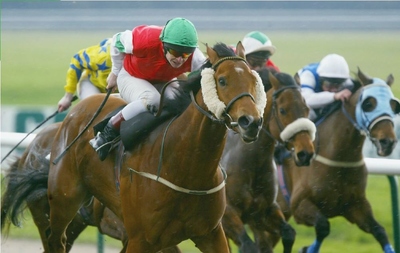 One of the highest profile domestic incidents of drugs in racing came with the unearthing of doping substances at the Moulton Paddocks yard of Newmarket handler Mahmood Al Zarooni in 2013. At the time Al Zarooni was under the employment of the powerful Godolphin operation, and viewed as one of the “Boys in Blue’s” most promising up and coming training talents. And with the world seemingly at his feet, Al Zarooni threw it all away, with what he rather accurately labelled as a “catastrophic error”.
One of the highest profile domestic incidents of drugs in racing came with the unearthing of doping substances at the Moulton Paddocks yard of Newmarket handler Mahmood Al Zarooni in 2013. At the time Al Zarooni was under the employment of the powerful Godolphin operation, and viewed as one of the “Boys in Blue’s” most promising up and coming training talents. And with the world seemingly at his feet, Al Zarooni threw it all away, with what he rather accurately labelled as a “catastrophic error”.
When all was said and done, a total of 11 horses under the care of Al Zarooni had tested positive for ethylestrenol or stanozol – both forms of anabolic steroids. Included amongst that number was a horse by the name of Certify, who, at the time, was trading as favourite for that year’s Oaks. Another tainted horse was Encke, who had held on by ¾l to repel the Triple Crown-chasing Camelot in the previous year’s St. Leger. Was Encke drugged when denying the Aidan O’Brien runner a place in the history books, or simply the better horse on the day? We will likely never know for sure. What we do know for sure however is that Al Zarooni has not been seen in racing since, having been handed an eight-year ban by the BHA for his actions.
Viking Nobbled, Byrne Banned
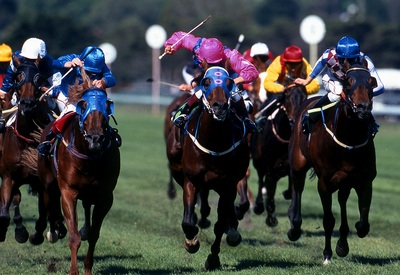 Fast forward five years to 2018, and it was not performance enhancing drugs which were the cause of consternation, but rather those used to prevent a horse from winning, and specifically in this instance a sedative by the name of acepromazine.
Fast forward five years to 2018, and it was not performance enhancing drugs which were the cause of consternation, but rather those used to prevent a horse from winning, and specifically in this instance a sedative by the name of acepromazine.
It was this lethargy-inducing substance which was found at 100 times the national screening limit in the blood sample of the Charles Byrnes-trained Viking Hoard following a race at Tramore. Rapidly becoming detached when the race got underway, the unfortunate horse was ultimately pulled up prior to the seventh obstacle. With that kind of blood test result though, it’s a wonder he even made it down to the start at all.
And why might someone wish a horse to run so badly? The answer is of course in order to lay the runner in question on the betting exchanges, safe in the knowledge that it had absolutely no chance of coming home in front. And sure enough, following a lengthy investigation, it was discovered that Viking Hoard had indeed being “backed to lose” for significant sums, not only on that occasion at Tramore, but on two prior occasions over the preceding four months.
The individual behind these lay bets managed to hide his activities behind a white label company, remaining known only as someone in “a distant part of the world” with prior links to match fixing in other sports. Byrnes wasn’t so fortunate, however. Whilst not found guilty of administering the drug himself, he was nevertheless charged with negligence in leaving the horse unattended at the track, and was handed a six month ban and financial penalties totalling €3,000.
Notorious Navarro Brought To Justice
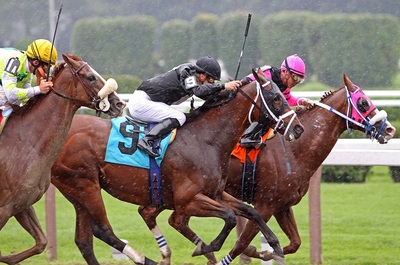 Major news in the UK and Ireland, the above tales of horse doping pale in comparison to the huge story that emerged from the US Racing world in 2021 – that of a trainer by the name of Jorge Navarro. Appearing on the racing scene in 2010, by 2017 Navarro had shot through the ranks to become the leading trainer at Monmouth for a fifth successive year. At a time when most of the top trainers in the land were delighted with a 20% strike rate, Navarro was consistently hitting a suspiciously high 30%.
Major news in the UK and Ireland, the above tales of horse doping pale in comparison to the huge story that emerged from the US Racing world in 2021 – that of a trainer by the name of Jorge Navarro. Appearing on the racing scene in 2010, by 2017 Navarro had shot through the ranks to become the leading trainer at Monmouth for a fifth successive year. At a time when most of the top trainers in the land were delighted with a 20% strike rate, Navarro was consistently hitting a suspiciously high 30%.
And suspicions certainly were aroused, with a company by the name of 5 Stones Intelligence – the same firm involved in the investigation of the Lance Armstrong doping scandal – being contacted to look into the issue. Consisting of former members of the Drug Enforcement Administration and ex-FBI Agents, 5 Stones were well equipped to uncover a scandal should one exist, and what they found shook the sport to its core. Scratching beneath the surface of the rumours and accusations, an extensive doping scandal began to emerge, exposing the administering of hard-to-detect substances used for a variety of reasons including increased stamina and strength, and an ability to run through the pain barrier. Even more concerning were the links to significant horse welfare issues related to the use of these substances.
Following a trail of informants and phone taps, and progressing to the involvement of the FBI themselves, March 2020 saw the beginning of raids not only on Navarro’s premises, but those of fellow high-profile trainer, Jason Servis and other implicated individuals. When all was said and done, doping charges were brought against at least 31 persons, spanning five US racing jurisdictions and the United Arab Emirates.
Many of those involved, including connections of $20million Saudi Cup winner Servis, continue to plead their innocence, but in August 2021 Navarro pleaded guilty as charged. One of the greatest doping scandals in the history of the sport, and certainly a blight on the US Racing landscape, it is to be hoped that the potential five-year jail sentence, and $25.9m in restitution payments faced by Navarro, may serve to deter such activity in the future.
And to end on a positive note, what the above tales do serve to illustrate is, that whether it be on a small scale involving just the one horse, or as part of a doping network as in the US case, the racing authorities around the globe are capable of uncovering, exposing, and punishing those involved in this most unsavoury, but thankfully rare, feature of the racing world.
